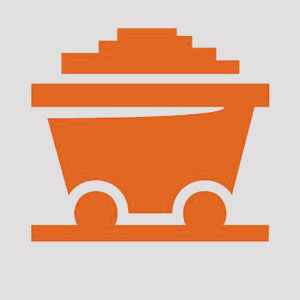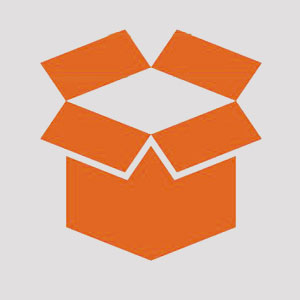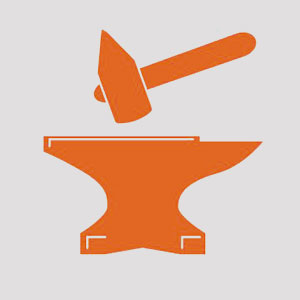Strategy June 22, 2015
Manufacturing Moves Up
Representing 7.8% of ad specialty revenues in 2014, manufacturing ranks as the number three market for promotional product sales.
Representing 7.8% of ad specialty revenues in 2014, manufacturing ranks as the number three market for promotional product sales.
Manufacturing is a perennial favorite for promotional products distributors. It has made the top five list of markets that generate industry revenue for the fifth year in a row. In 2014, manufacturing moved up to being the third largest market for promotional product sales.
There is a caveat, however: While manufacturing positively flips positions with the financial sector for 2014, it also dips slightly in revenue (8.4% in 2013 vs. 7.8% in 2014). Yet it remains a top producer, particularly for distributors reporting revenue in the $1 million to $10 million range. Overall, these firms were most likely to do business with manufacturing/distribution companies.
Does location matter? Interestingly, the most distributors citing manufacturing as their top market hail from the Midwest, which happens to be a notable area of sales resurgence according to the 2015 State of the Industry. However, no one region runs away with manufacturing clients. The Midwest was followed by the Northeast, Southeast, Southwest and Pacific at a fairly close margin.
Brand Awareness
The view ahead of manufacturing is also optimistic. According to the National Association of Manufacturers (NAM), taken alone manufacturing would be one of the top 10 largest economies in the world. It adds $2 trillion to the U.S. economy.
The Institute for Supply Management (ISM) expects continued good fortune as well. Its Spring 2015 Semiannual Economic Forecast (based on U.S. purchasing and supply executives) predicts positive manufacturing growth through 2015 with an expectation to increase revenue by 3.5%. So how do you get involved? Consider the experience of distributors that have found manufacturing an important base.
Manufacturing companies in the toy, auto, food and electronics industries make up about 50% of Brand Marketers’ (asi/41584) client base. These clients use promotional items for brand awareness campaigns and at trade shows where they demonstrate their product. Brand Marketers, however, does much more than provide giveaways. It specializes in experiential marketing to engage the customer
“The trend is getting customers to post on social media,” says Adam David Hollander, president at Brand Marketers. This echoes a point highlighted in an Industry Week blog post by Michael Kotelec, a global practice leader for Verizon Enterprise Solutions. His article, “5 Manufacturing Trends that will Shape the Market in 2015,” places social media as the second most likely influence. Not only do consumers want to do business online, so do wholesalers and dealers up the supply chain of manufacturing.
Just how does one go about this shift in communication? “I think one of the best ways, is exchanging a reward for a post,” Hollander says. “For one client, we modified a vending machine to give out product once a person posted to Twitter or another social media site.” The client was a cellphone manufacturer and the incentive from the vending machine was fluorescent, imprinted sunglasses at “color run” events. The vending machine prompted consumers to “Put your color on and take a selfie,” with a big red “Selfie Button.” The campaign was generating buzz for the manufacturer’s product while also capturing consumer information.
“The same type of activity could be done low-tech with people,” Hollander says, suggesting for example, the use of brand ambassadors. Educated teams of people visit targeted locations to encourage participation in an event or to sample a brand. They check the social media of those they approach for posts and then give away the promotional product.
Serve The Whole Manufacturer
Another tactic is to capture business from a variety of departments within a manufacturer. “We call on many manufacturing companies of all different types,” says Jon Gursky of Crescendo Graphics LLC. “The steel and foundry plants seem to give us the biggest share of the business. They make up 35% of my gross sales.”
Given the percentage of revenue, one might think that these companies were using promotional products for more than a simple giveaway. That isn’t Gursky’s experience. “We have called on over 5,000 manufacturing companies in the last three years and I would say not even 1% wanted us to set up an online store or handle their uniforms,” he says.
He does, however, do a lot of work with safety managers and marketing departments, explaining: “On the safety side, we sell a lot of apparel in the safety colors and ANSI certified. To the marketing side, I do a good amount of job fair items and USB items.” Once you have a contact within the organization, such as a safety manager, you can ask for referrals to other departments such as human resources.
Safety and production are priorities for manufacturing clients. ISM reports that purchasing and supply managers estimate their companies are operating on average at 79.5% of capacity. There’s room for improvement, and an incentive campaign could be the answer. The five manufacturing sectors leading the charge for production increase are: 1) nonmetallic mineral products, 2) textile mills, 3) transportation equipment, 4) electrical equipment, appliances and components and 5) furniture and related products.
Uniforms for Manufacturing

U.S. manufacturers employ 12 million people and support 17.4 million total jobs. Uniforms alone can boost a distributor’s sales significantly.
Within any given manufacturing company there are many different jobs, requiring an array of apparel pieces: industrial shirts and pants for the production floor; high-visibility clothing for heavy equipment or road workers; jackets, hats and gloves for truckers or load masters; office dress shirts and polos for front office executives and sales personnel.
Increasingly, promotional apparel suppliers are providing a significant selection of uniform garments. SanMar (asi/84863), for example, recently announced the addition of Bulwark brand flame-resistant (FR) apparel to its lineup of workwear. SanMar now offers 12 Bulwark products including shirts, coveralls, jackets and pants to outfit workers in electrical, utility, oil and gas, flame-cutting, welding and similar occupations. All products carry Arc-rated FR and most meet Underwriters Laboratories requirements.
When selling uniforms, keep in mind that reliable inventory is an important factor. As a uniform wears out or new hires come aboard, replacement or addition of a garment requires consistent style and color choices over the long term.
Uniform programs also have a need for identification or logoed emblems to show brand, rank or personal identity. Industry suppliers such as Penn Emblem (asi/77120) and World Emblem (asi/98264) offer a range of appliqués, patches and transfers that will stand up to industrial wash and wear.
Recruitment Efforts
Also impacting productivity is a general shortage of skilled workers. According to new research from Deloitte and The Manufacturing Institute, the United States faces a need for nearly 3.5 million manufacturing jobs over the next decade and 2 million of those jobs are likely to go unfilled due to a skills gap. According to NAM, 80% of manufacturers cannot find the skilled workers they need.
“The steel and foundry plants seem to give us the biggest share of the business. They make up 35% of my gross sales.”
Jon Gursky, Crescendo Graphics LLC
To address the issue, an annual Manufacturing Day event is part of a nationwide grassroots movement by NAM to raise awareness among local students about careers in the manufacturing industry. It occurs on the first Friday of every October. In 2014, local Manufacturing Day events were held at more than 800 sites in 48 states and attended by more than 35,000 people.
For distributors with manufacturing clients, Manufacturing Day becomes a natural door opener for sponsorship-related promotions. Items such as T-shirts, awareness bracelets, pencils and more fit the occasion. In general, Gursky has found that hats are a hot product for manufacturers across the board. But, he adds, “It has to be a good hat with a lot of locations and interesting design.”
A customized cap is just the tip of Crescendo’s approach. “We try to personalize everything we do for a client right from the beginning call,” Gursky says. “We make it easy to use our services. I will do all the legwork on finding the correct items for the customer by asking the correct questions and listening to the answers. Then we send them a presentation with a starting point of products that make sense. We refine the products as needed until they have a good solution.”
Looking ahead, the best bet for growth according to Gursky is to pinpoint trends in hot manufacturing markets. “The energy field and the legal marijuana field are two booming areas for us,” he says.
5 Promotional ideas for manufacturers

- Dealer incentive programs that motivate sales via a tiered system of goals, each rewarded with merchandise or travel
- Point-of-purchase displays, such as counter mats, front door mats and feather flags
- Trade show displays such as banners/signage and giveaways to draw attendees to the booth
- Productivity and safety goals that are supported with imprinted tools, motivational materials and custom calendars highlighting each stage of the campaign
- Wellness campaigns supported with exercise equipment (hand weights or a yoga mat), lunch coolers, pedometers and performance apparel
Stay Positive
Not all distributors have experienced a boom over the last year. “Since most of our manufacturing business is oil- and gas-field related, the current prices have hit hard,” says DeAnn Wells, co-owner of Exclusively Yours Advertising LLC (asi/522711). However, in past years, Exclusively Yours has served the sector by stocking imprinted manufacturing labels and logoed tools for assembly, such as a screwdriver to be included with supplies for a piece of equipment. Hard hats and truck magnets have also been popular for field personnel.
“The trend is getting customers to post on social media.”
Adam David Hollander, Brand Marketers
Wells values the sector’s business and plans for the long term. The team at Exclusively Yours created a touch program specifically for oil/gas manufacturing clients. While they are selling just a few articles here and there right now and have, “A few random mailings marked ‘Ideas for later,’” she says, they are maintaining the connections.
“We make phone calls to just check in to see how they are doing; what they are hearing from the industry,” Wells says. “We want to make sure they understand we are with them in good times and bad.”
Reaching out consistently also ensures that when a contact gets laid off, whoever fills that position knows Exclusively Yours has been serving the account. Because Exclusively Yours originally focused its sales on items like labels, battery inserts, specialized tools, etc., it is well positioned to assist manufacturers with a bit of belt-tightening. “We look for ways we can help them cut costs,” Wells says. “We may offer to stock inventory for them, reduce the release quantity, whatever we can do to help them manage their cash flow better. This is a little bit of a balancing act making sure we aren’t taking the financial hit, but more sharing it or spacing it out instead.”
Branch Out
Another angle to play is downstream customers such as distributors or retail. “If they haven’t used co-op money before, we want to really help them take advantage of any opportunities there,” Wells says. “Depending on where you are in the manufacturing chain, there are a lot of opportunities to branch out. Get money flowing to your clients with co-ops or if you are at the other end, help your clients set up co-ops for their end-user.”
There are alternative clients to consider during down times. “We try to never let one sector dominate our overall business,” Wells says. “Horror stories abound about companies that lose a client and 50% of their business. We definitely don’t want that. We go through our clients and start working to build areas that may have been neglected in the boom cycle.”
No doubt the energy business will boom again, and Exclusively Yours will be right there to profit along with it. Until then, manufacturing represents a large, diverse client base allowing distributors to specialize in programs that serve manufacturers across a broad spectrum of industries, from chemical to textile, paper to electronics.
Each manufacturing niche has its own vertical channel of distributors, dealers and wholesalers. Branch out and manufacturing will be moving up your client list too.
Outlook for Growth
According to the Spring 2015 Semiannual Economic Forecast from The Institute of Supply Management, there are 14 manufacturing industries expecting revenue growth in 2015. Listed in order, they are:

#1 Nonmetallic Mineral Products

#2 Paper Products

#3 Primary Metals
- #4Furniture & Related Products
- #5 Machinery
- #6 Textile Mills
- #7Food, Beverage & Tobacco Products
- #8Fabricated Metal Products
- #9Plastics & Rubber Products
- #10Chemical Products
- #11 Miscellaneous Manufacturing
- #12Electrical Equipment, Appliances & Components
- #13Computer & Electronic Products
- #14 Transportation Equipment
Tonia Kimbrough is a FL-based freelance writer and editor.
